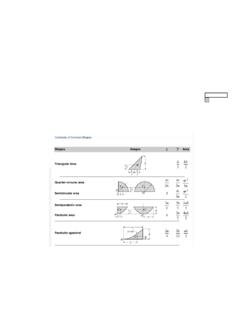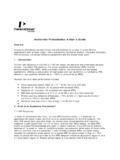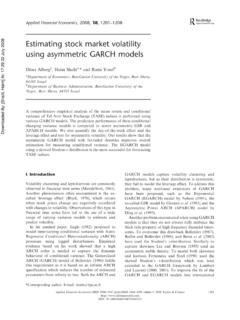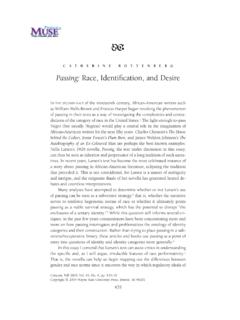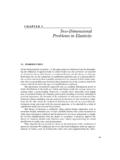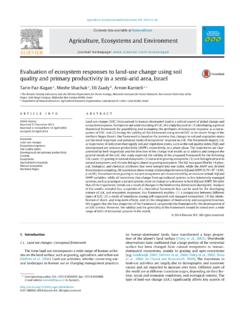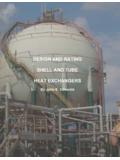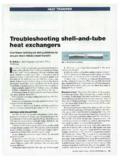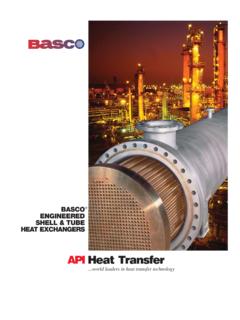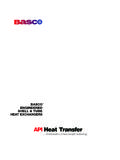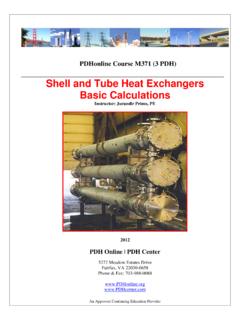Transcription of CHA PTER 10
1 241 CHAPTER 10 Cascade Control Objectives of the Chapter To review classical cascade control. To present an alternate way of thinking about cascade control that leads to improved performance. To introduce controller design methods that accommodate process uncertainty. Prerequisite Reading Chapter 3, One-Degree of Freedom Internal Model Control Chapter 4, Two-Degree of Freedom Internal Model Control Chapter 5, MSF Implementations of IMC Systems Chapter 6, PI and PID Controller Parameters from IMC Design Chapter 7, Tuning and Synthesis of 1DF IMC Controllers for Uncertain Processes Chapter 8, Tuning and Synthesis of 2DF Control Systems 242 Cascade Control Chapter 10 INTRODUCTION Cascade control can improve control system performance over single-loop control whenever either.
2 (1) Disturbances affect a measurable intermediate or secondary process output that directly affects the primary process output that we wish to control; or (2) the gain of the secondary process, including the actuator, is nonlinear. In the first case, a cascade control system can limit the effect of the disturbances entering the secondary variable on the primary output. In the second case, a cascade control system can limit the effect of actuator or secondary process gain variations on the control system performance. Such gain variations usually arise from changes in operating point due to setpoint changes or sustained disturbances.
3 A typical candidate for cascade control is the shell and tube heat exchanger of Figure FRPRTRS teamCondensateFeedEffluent Figure A shell and tube heat exchanger. The primary process output is the temperature of the tube side effluent stream. There are two possible secondary variables, the flow rate of steam into the exchanger and the steam pressure in the exchanger. The steam flow rate affects the effluent temperature through its effect on the steam pressure in the exchanger. The steam pressure in the exchanger affects the effluent temperature by its effect on the condensation temperature of the steam.
4 Therefore, either the steam flow rate or the steam pressure in the exchanger can be used as the secondary output in a cascade control system. The choice of which to use depends on the disturbances that affect the effluent temperature. If the main disturbance is variations in the steam supply pressure, due possibly to variable steam demands of other process units, then controlling the steam flow with the control valve is most likely to be the best choice. Such a controller can greatly diminish the effect of steam supply pressure variations on the effluent temperature.
5 However, it is still Introduction 243 necessary to have positive control of the effluent temperature to be able to track effluent temperature setpoint changes and to reject changes in effluent temperature due to feed temperature and flow variation. Since there is only one control effort, the steam valve stem position, traditional cascade control uses the effluent temperature controller to adjust the setpoint of the steam flow controller, as shown in Figure FRCTRCS teamCondensateFeedEffluentTemperatureSet pointFlowSetpoint Figure Cascade control of effluent temperature via steam flow control.
6 If feed flow and temperature variations are significant, then these disturbances can be at least partially compensated by using the exchanger pressure rather than the steam flow as the secondary variable in a cascade loop, as shown in Figure TRCS teamCondensateFeedEffluentTemperature SetpointPressureSetpointPRCTRCS teamSteamCondensateFeedEffluentTemperatu re SetpointPressureSetpointPRCPRC Figure Cascade control of effluent temperature via shell side pressure control. 244 Cascade Control Chapter 10 The trade-off in using the configuration of Figure rather than that of Figure is that the inner control loop from the steam pressure to the valve stem position may not suppress variations in valve gain as well as with an inner loop that uses the valve to control the steam flow rate.
7 This consideration relates to using a cascade control system to suppress the effect of process uncertainty, in this case the valve gain, on the control of the primary process variable, the effluent temperature. We will have a lot more to say about using cascade control systems to suppress process uncertainty in the following sections. To repeat, cascade control has two objectives. The first is to suppress the effect of disturbances on the primary process output via the action of a secondary, or inner control loop around a secondary process measurement.
8 The second is to reduce the sensitivity of the primary process variable to gain variations of the part of the process in the inner control loop. As we shall demonstrate, cascade control can be usefully applied to any process where a measurable secondary variable directly influences the primary controlled variable through some dynamics. We will also demonstrate that despite frequent literature statements to the contrary, inner loop dynamics do not have to be faster than the outer loop dynamics. However, the traditional cascade structure and tuning methods must be modified in order for cascade control to achieve its objectives when the inner loop process has dynamics that are on the order of, or slower than, the primary process dynamics.
9 CASCADE STRUCTURES AND CONTROLLER DESIGNS Figure shows the traditional PID cascade control system block diagram (Seborg et al., 1989). This is the cascade structure associated with figures and For Figure , the secondary process variable y2 is the steam flow rate, while for Figure , it is the shell-side steam pressure. In both cases, the primary variable y1 is the effluent temperature. PID1 PID2 ProcessDisturbancesSet pointInner loopOuter loopp2p1y2d2d1 Saturationy1 PID1 PID2 ProcessDisturbancesSet pointInner loopOuter loopp2p1y2d2d1 Saturationy1 Figure Traditional cascade block diagram.
10 Cascade Structures and Controller Designs 245 One of the objectives of this section is to present methods for obtaining the parameters of the PID controllers of Figure from a well-designed and well-tuned IMC cascade control system, just as we did for single-loop control systems in Chapter 6. Figure shows an IMC cascade block diagram that accomplishes the same objectives as Figure There are other equivalent IMC cascade structures to that given by Figure (Morari and Zafiriou, 1989). However, the configuration of Figure is convenient because it suggests that controller q2 should be designed and tuned solely to suppress the effect of the disturbance d2 on the primary output y1, and also convenient because both controller outputs u1 and u2 enter directly into the actuator.
